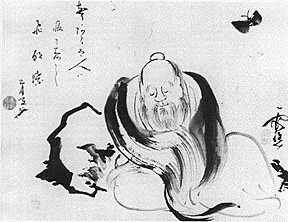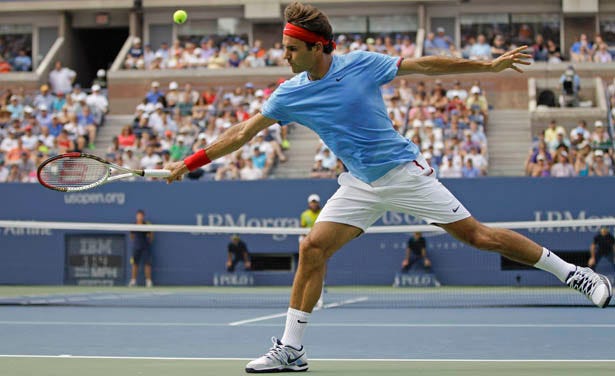Notes on Not Trying too Hard
"The secret to winning any game lies in not trying too hard."
-Timothy Gallwey
There is a well-known parable, told by Zhuangzi, about Taoism that tells the story of the butcher who is so practiced at his art that he never needs to sharpen his knives. For the Taoist butcher, his work is a sort of effortless play, a dance. Recently while reading The Inner Game of Tennis, a definite classic on applied Tao, I was struck by how this hard to define idea of "doing without trying" is the connecting thread behind so many philosophies, and yet it remains somewhat ineffable, and maybe more mystical than need be. After all, if you can apply the art of the Tao to smashing a tennis serve or butchering a cow, this is very practical and physical stuff. In fact, it is the antidote to much of the modern mind's tendency to over think, over analyze, and so become all cerebral, all head, disconnected from body. The antidote to this is embodiment, being present, being connected to your own body, the space you are in and the people that you are talking to in real life. All things most of us could use more of in 2025.
I see these different elements of Taoism as forming a sort of antidote to the over cerebralization and stuck in our head-ness of the modern Seted Sapiens (Sitting human) since we are usually seated at a desk, a laptop, in a car or on the couch. We can find balance in the realm of being, doing, connecting, walking.
One of the best books about all of this is The Inner Game of Tennis by Timothy Gallwey, who argues that the best way to play well is to not try too hard. This of course can seem counter intuitive, but anyone who has played tennis, or frankly, just about any sport, can think of times when they played well and it felt egoless, like they were able to get out of their own way. Gallwey's tips for reaching this effortless state of flow include tricks like really looking at the tennis ball, and noticing the sound the ball makes when it hits the racket, in other words tricks for staying embodied and present in the moment. It is those moments when it feels like you are not even trying, but effortlessly acing a tennis serve or sinking three-point shots or bowling strikes or whatever—there is an ease to playing well.
I think this not trying philosophy can be applied to not just tennis but just about everything. Including social situations, hobbies, creative endeavors, productivity you name it. The idea is to approach things with an effortless ease. What Burroughs called "Do Easy." We might call it the Tao of doing. It means learning how to get out of your own way. It might sound like the Tao of doing only applies to physical action-oriented things, but I believe it can apply to social interactions and creative endeavors as well.
I was at a crowded party the other weekend, and it was interesting to observe the range of how people interact and socialize. There is a spectrum at any crowded gathering from the wallflowers who post up in a corner and maybe never venture from one spot to the really outgoing people who work the room. The people who are most comfortable in most social interactions are the ones who are least stuck in their own head. They are at play. Whereas the people who have a hard time chatting with a stranger are the ones who over think it, who are trying not doing.
I know this from self-examination, as well, since I am somewhere in the middle neither super outgoing nor very shy, so I can know what's going on when I am feeling outgoing, chatty and charismatic, it is often because I am simply talking to whomever without overthinking things. On the other hand, if I get trapped in my head, I clam up and have a hard time saying anything to anybody.
You can use the Tao of doing to become more charismatic by doing not trying. If you think about what being good at social interaction is all about, it mostly boils down to simply starting conversations and then keeping them going. This can't be done from within your own head, it's all about a state of flow. That comes down to being fully present and in the moment. In other words, not locked in your own head. This same, get out of your own way approach applies to creativity. Creativity flourishes when at play, but when we try to force it to happen it can wilt away.
Being present in the moment so you can better live your life, connect with yourself, your body, your surroundings, and take physical action, and get stuff done without over thinking it, and be more charismatic and more creative. We can find playful, Tao-like approaches to every human endeavor, the common thread is to approach whatever you are doing playfully, relaxed, and open. It's worth inviting the Tao into everyday life—but just don't try to hard!


